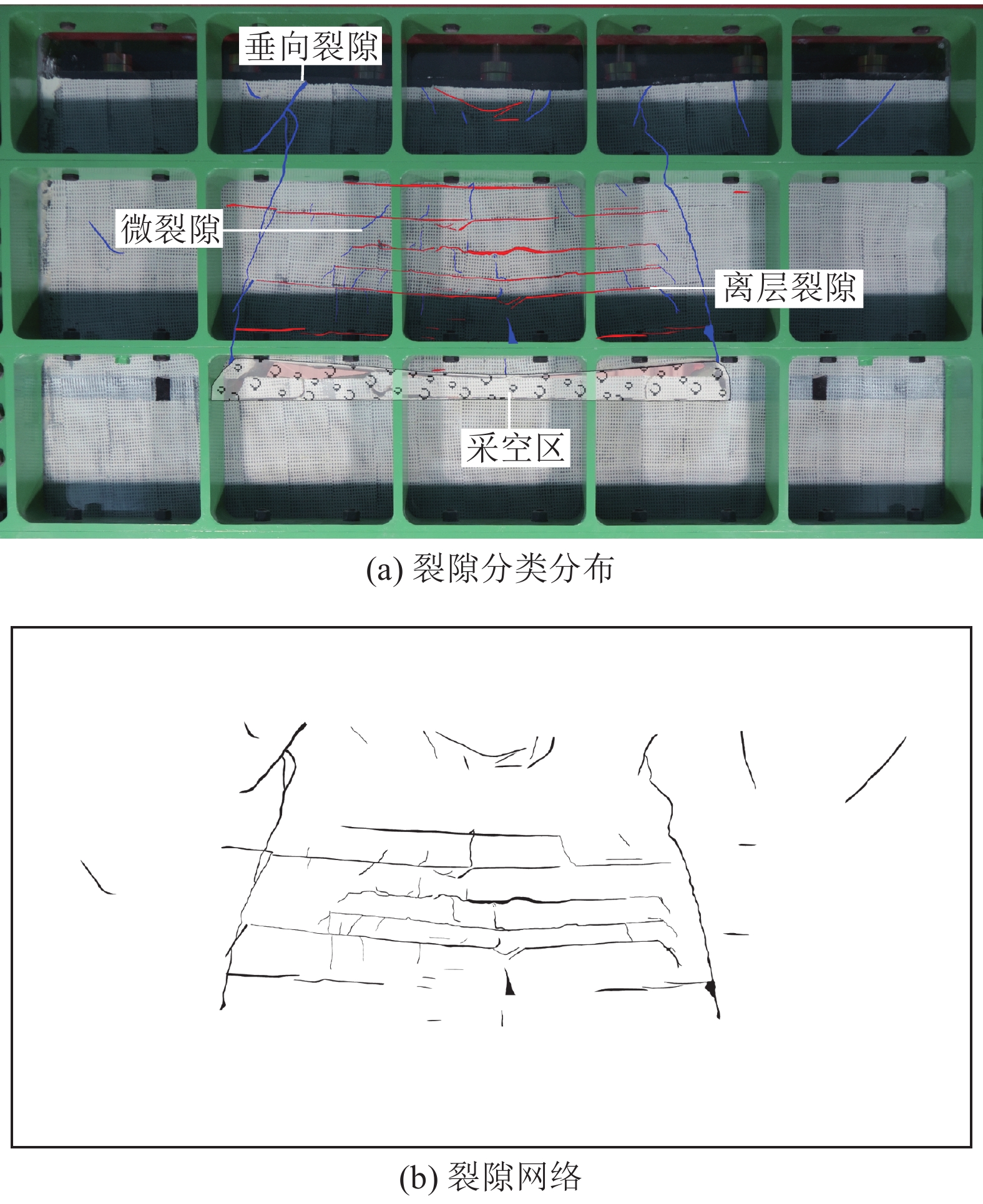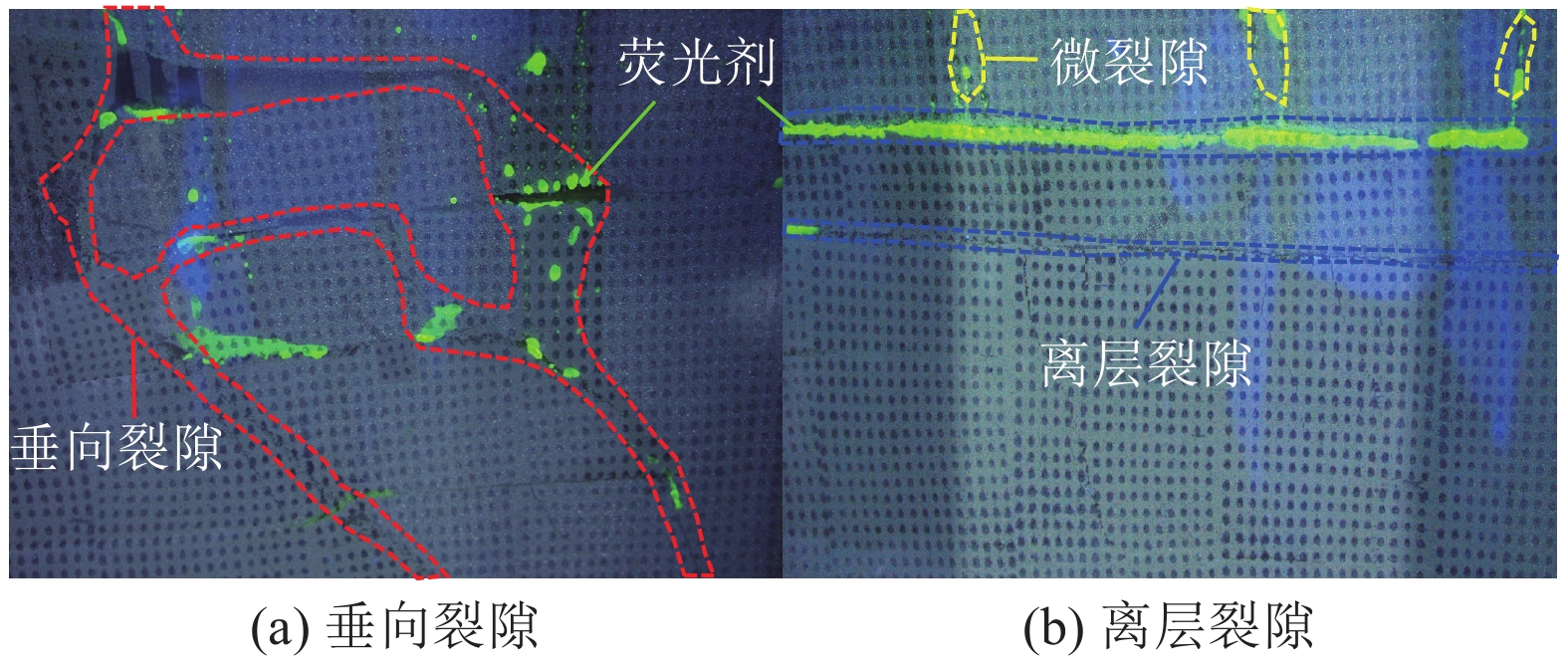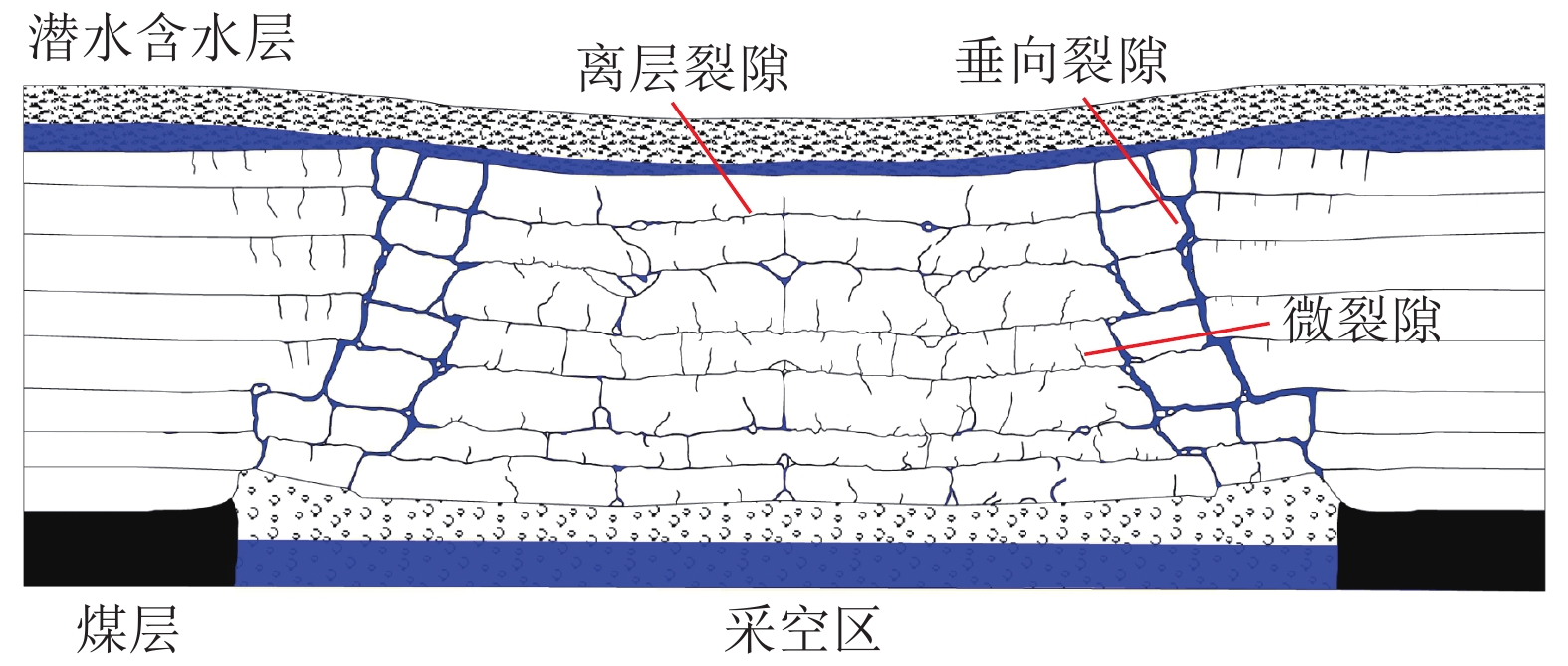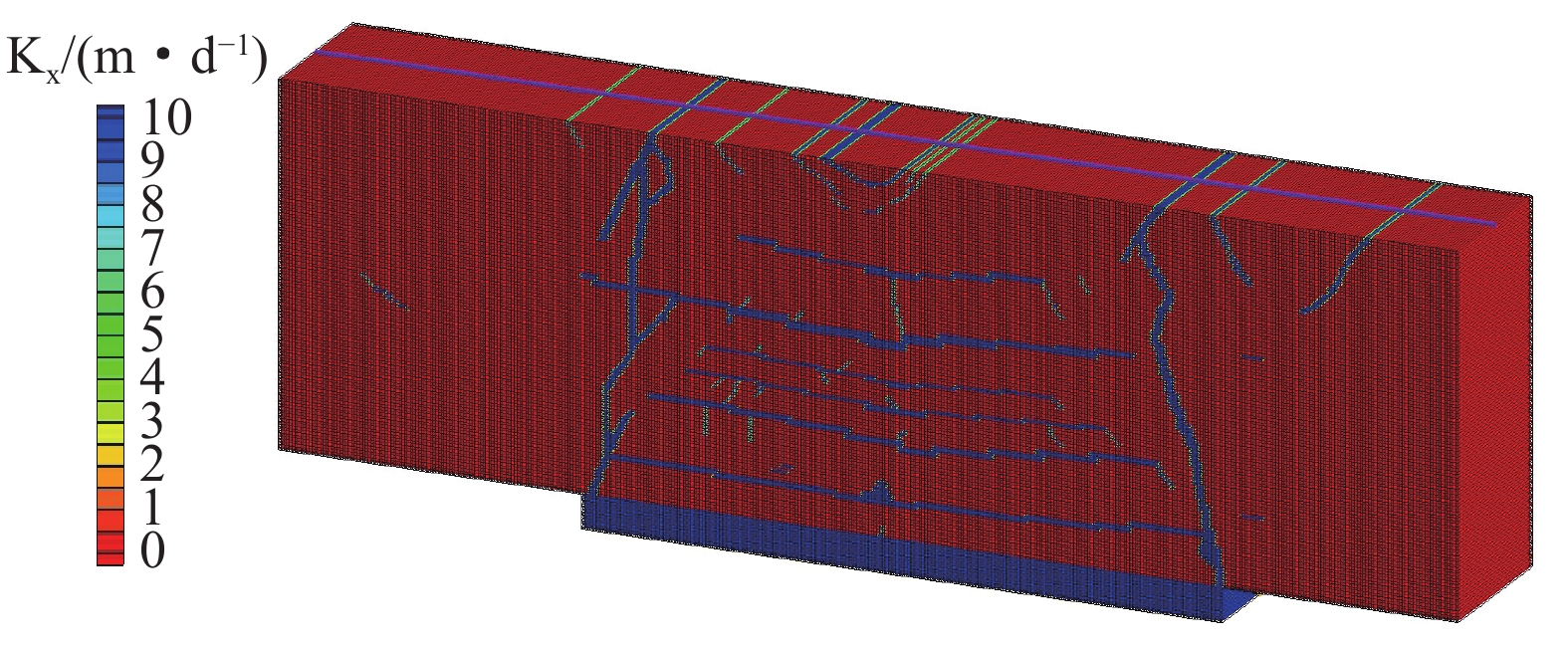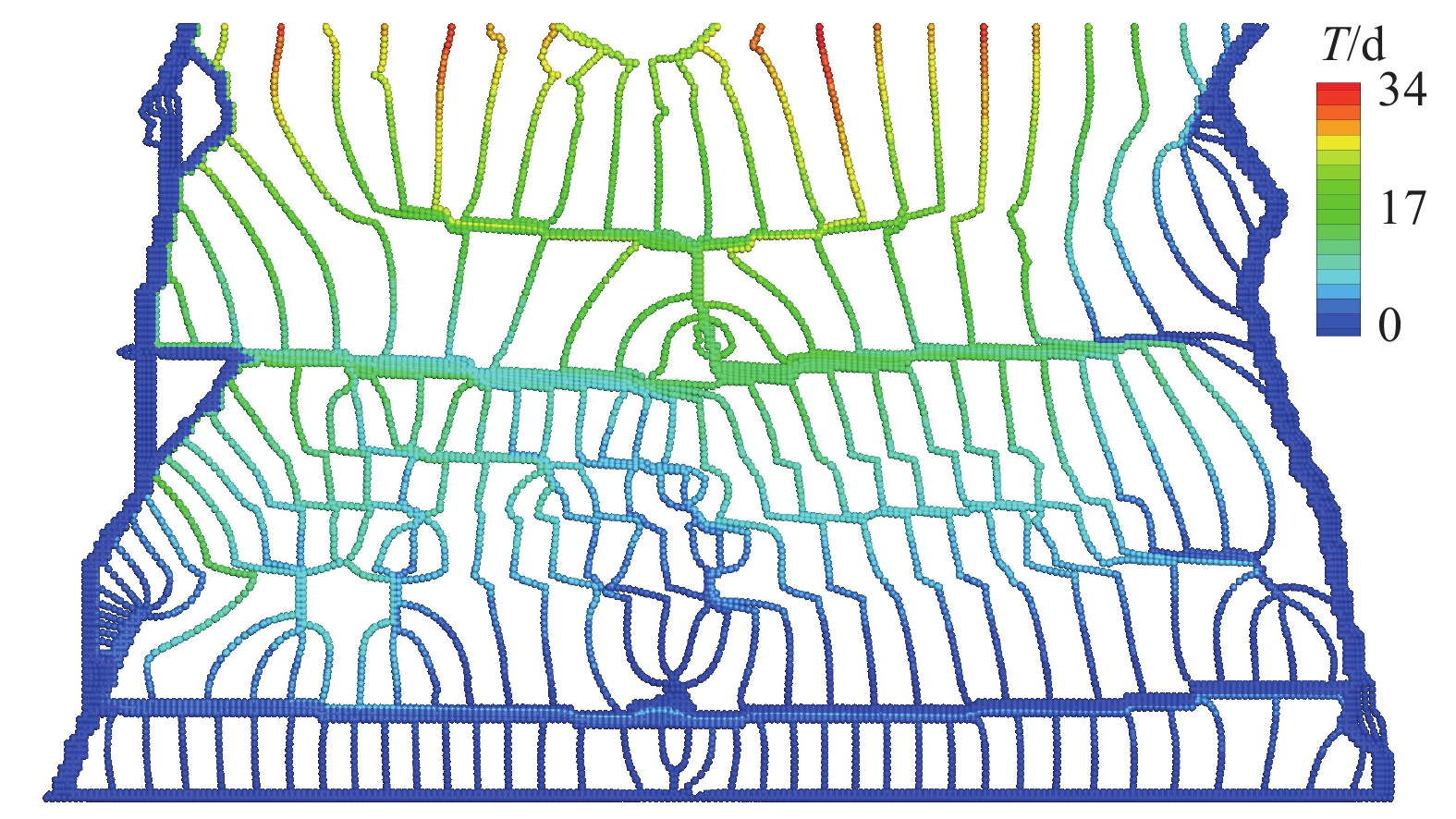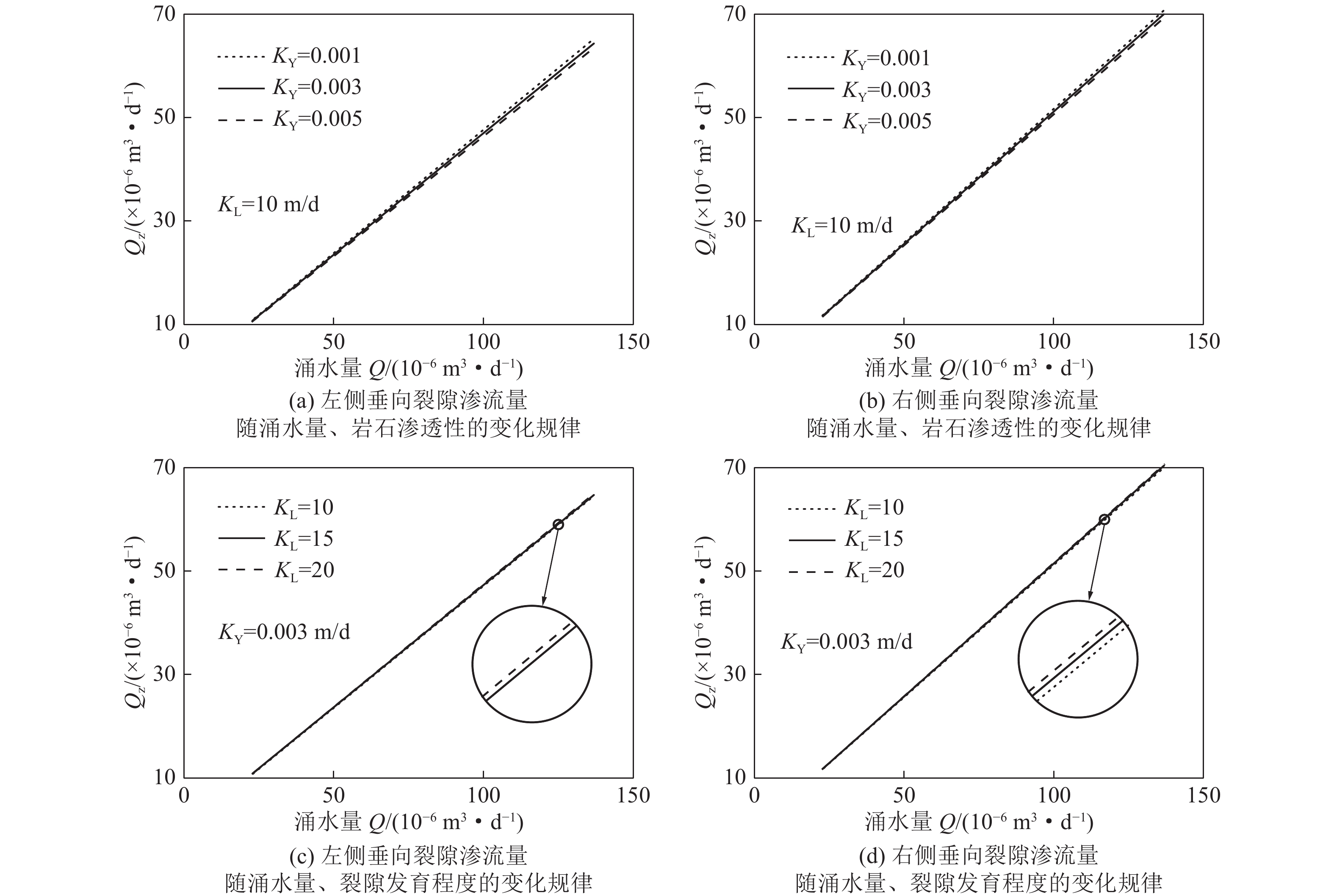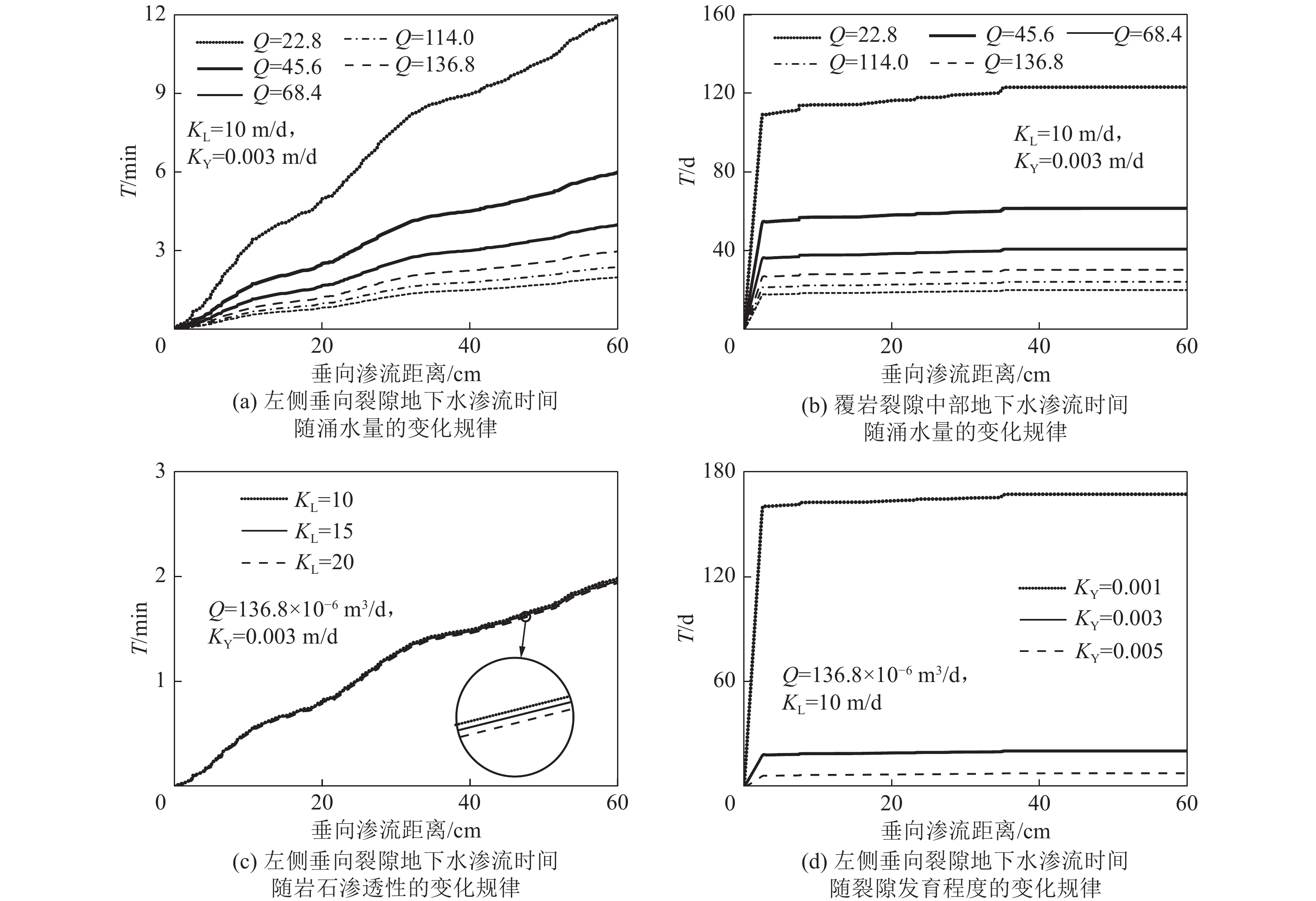Experimental study on characteristics of grounawater fracture in coalmine overlying rock
-
摘要:
覆岩裂隙地下水渗流特征是采煤和采空区后期维护需考虑的重点因素,特别是煤矿地下水库修建区,覆岩裂隙场经沉积作用形成稳定形态,具有良好的储水和导水能力,也是煤矿地下水库重要的组成部分。在浅层地下水丰富区域或夏季极端降雨条件下,地下水库形成垂向补给,分析地下水在覆岩裂隙中的渗流特征为煤矿地下水库安全运营及地下水资源保护提供科学依据。此次研究通过固−液耦合相似模型试验获得开采区覆岩裂隙发育稳定规律及导通含水层后地下水渗流特征,分析得出延伸远空间大的离层裂隙和微裂隙多以储水为主,贯穿多个岩层的垂向裂隙具有很强的导水能力,离层裂隙间的水力联系主要靠两侧区域的垂向裂隙形成。垂向补给条件下,地下水先以非饱和方式沿垂向裂隙进行入渗,由上及下覆岩裂隙逐渐区域饱和,最终形成稳定的饱和入渗形式。在此基础上建立饱和渗流状态的地下水渗流数学模型,并依靠数值法求解,与相似模拟试验相互验证得出垂向裂隙是主要的导水通道,其导水量占比最大可达到97%,与此同时垂向裂隙中地下水的运移速度也远超出离层裂隙中的多个数量级。最后通过敏感性分析得出垂向裂隙渗流量与裂隙发育程度和总涌水量成正相关,与岩石渗透性成负相关。覆岩裂隙中地下水的运移时间与裂隙发育程度、岩石渗透性和总涌水量均呈负相关。
Abstract:The seepage characteristics of groundwater in the overlying fissures are the key factors to be considered in the later maintenance of coal mining and goaf, especially in the underground reservoir construction area of coal mines. It is also an important part of coal mine underground reservoir. In shallow groundwater-rich areas or under extreme summer rainfall conditions, underground reservoirs form vertical recharge, and analyzing the seepage characteristics of groundwater in overlying fissures provides a scientific basis for the safe operation of coal mine underground reservoirs and the protection of groundwater resources. In this study, the solid-liquid coupling similarity model test was used to obtain the development and stability of the overlying fissures in the mining area and the characteristics of groundwater seepage after the aquifer was connected. The analysis showed that the large abscission fissures and micro-fissures that extend far and wide are mostly water storage. , the vertical fissures running through multiple rock layers have strong water conductivity, and the hydraulic connection between the separation layer fissures is mainly formed by the vertical fissures in the two sides. Under the condition of vertical recharge, groundwater first infiltrates along the vertical fissures in an unsaturated manner, and is gradually saturated regionally from the upper and lower overlying fissures, finally forming a stable saturated infiltration form. On this basis, a mathematical model of groundwater seepage in saturated seepage state is established, and the numerical method is used to solve it. It is verified with similar simulation experiments that vertical fractures are the main water conduction channels, and their water conduction can account for up to 97%. At the same time, the migration speed of groundwater in vertical fractures is also many orders of magnitude higher than that in abscission fractures. Finally, through the sensitivity analysis, it is concluded that the vertical fracture seepage is positively correlated with the fracture development degree and the total water inflow, and negatively correlated with the rock permeability. The migration time of groundwater in overlying fissures is negatively correlated with the degree of fissure development, rock permeability and total water inflow.
-
-
表 1 水文地质参数
Table 1 Hydrogeological parameter
介质 渗透系数KH/(m·d−1) KH/KV 孔隙度 裂隙 30 1 1 岩石 0.003 10 0.1 采空区 30 1 0.3 -
[1] 顾大钊. 煤矿地下水库理论框架和技术体系[J]. 煤炭学报,2015,40(2):239−246. GU Dazhao. Theory framework and technological system of coal mine underground reservoir[J]. Journal of China Coal Society,2015,40(2):239−246.
[2] 顾大钊,颜永国,张 勇,等. 煤矿地下水库煤柱动力响应与稳定性分析[J]. 煤炭学报,2016,41(7):1589−1597. GU Dazhao,YAN Yongguo,ZHANG Yong,et al. Experimental study and numerical simulation for dynamic response of coal pillars in coal mine underground reservoir[J]. Journal of China Coal Society,2016,41(7):1589−1597.
[3] 曹志国,李全生,董斌琦. 神东矿区煤炭开采水资源保护利用技术与应用[J]. 煤炭工程,2014,46(10):162−164. CAO Zhiguo,LI Quansheng,DONG Binqi. Water resource protection and utilization technology and application of coal mining in Shendong Mining Area[J]. Coal Engineering,2014,46(10):162−164.
[4] 曹志国,何瑞敏,王兴峰. 地下水受煤炭开采的影响及其储存利用技术[J]. 煤炭科学技术,2014,42(12):113−116. CAO Zhiguo,HE Ruimin,WANG Xingfeng. Coal mining affected to underground water and underground water storage and utilization technology[J]. Coal Science and Technology,2014,42(12):113−116.
[5] 顾大钊. 能源“金三角”煤炭现代开采水资源及地表生态保护技术[J]. 中国工程科学,2013,15(4):102−107. GU Dazhao. Modern mining of water resources and surface ecological protection technology for coal in the energy "Golden Triangle"[J]. Chinese Engineering Science,2013,15(4):102−107.
[6] 胡振琪,龙精华,王新静. 论煤矿区生态环境的自修复, 自然修复和人工修复[J]. 煤炭学报,2014,39(8):1751−1757. HU Zhenqi,LONG Jinghua,WANG Xinjing. Self-healing, natural and artificial restoration of ecological environment for coal mining[J]. Journal of China Coal Society,2014,39(8):1751−1757.
[7] 顾大钊. 能源“金三角”煤炭开发水资源保护与利用[M]. 北京: 科学出版社, 2012: 125−127. [8] 顾大钊. 晋陕蒙接壤区大型煤炭基地地下水保护利用与生态修复[M]. 北京: 科学出版社, 2015: 139−147. [9] 钱鸣高. 岩层控制的关键层理论[M]. 徐州: 中国矿业大学出版社, 2003: 11−18. [10] 李春睿. 高强度开采覆岩裂隙场时空演化规律与瓦斯流动关系的研究[D]. 北京: 煤炭科学研究总院, 2009. LI Chunrui. Research on the relationship between the temporal and spatial evolution of overlying rock fissure field and gas flow in high-intensity mining[D]. Beijing: China Coal Research Institute, 2009.
[11] 张 勇,张 保,张春雷,等. 厚煤层采动裂隙发育演化规律及分布形态研究[J]. 中国矿业大学学报,2013,42(6):935−940. ZHANG Yong,ZHANG Bao,ZHANG Chunlei,et al. Study of the dynamic evolution rules and distribution pattern of mining-induced fractures of thick coal seam[J]. Journal of China University of Mining & Technology,2013,42(6):935−940.
[12] 许家林,钱鸣高,金宏伟. 岩层移动离层演化规律及其应用研究[J]. 岩土工程学报,2004,26(5):632−636. XU Jialin,QIAN Minggao,JIN Hongwei. Study on the evolution law of strata movement and separation and its application[J]. Chinese Journal of Geotechnical Engineering,2004,26(5):632−636.
[13] 毕业武. 保护层开采对煤层渗透特性影响规律的研究[D]. 阜新: 辽宁工程技术大学, 2005. BI Yewu, Research on effect law of coal seam penetrability after mining protection layer [D]. Fuxin: Liaoning University of Engineering and Technology, 2005.
[14] LI B,GARGA V K,DAVIES M H. Relationships for non-darcy flow in rockfill[J]. Journal of Hydraulic Engineering,1998,124(2):206−212. doi: 10.1061/(ASCE)0733-9429(1998)124:2(206)
[15] MOUTSOPOULOS K N,TSIHRINTZIS V A. Approximate analytical solutions of the forchheimer equation[J]. Journal of Hydrology,2005,309(1-4):93−103. doi: 10.1016/j.jhydrol.2004.11.014
[16] KOGURE, KEIJI. Experimental study on permeability of crushed rock [J]. Memoirs of the Defense Academy, 1976, 16(4): 149−154.
[17] 袁 亮,郭 华,沈宝堂,等. 低透气性煤层群煤与瓦斯共采中的高位环形裂隙体[J]. 煤炭学报,2011,36(3):357−365. YUAN Liang,GUO Hua,SHEN Baotang,et al. Circular overlying zone at longwall panel for efficient methane capture of mutiple coal seams with low permeability[J]. Journal of China Coal Society,2011,36(3):357−365.
[18] 李文平,刘启蒙,孙如华. 构造破碎带滞后突水渗流转换理论与试验研究[J]. 煤炭科学技术,2011,39(11):10−13. LI Wenping,LIU Qimeng,SUN Ruhua. Theoretical and experiment study on vadose conversion of water inrush later occurred from structure broken zone[J]. Coal Science and Technology,2011,39(11):10−13.
[19] 程志恒. 近距离煤层群保护层开采裂隙演化及渗流特征研究[D]. 北京: 中国矿业大学(北京), 2015. CHENG Zhiheng. Study on crack evolution and permeability characteristic of protective coal seam mining in close coal seams group [D]. Beijing: China University of Mining and Technology-Beijing, 2015.
[20] 金志远. 浅埋近距煤层重复扰动区覆岩导水裂隙发育规律及其控制[D]. 徐州: 中国矿业大学, 2015. JIN Zhiyuan. Development laws and control of overlying strata water flowing fractures in repeated disturbance zone of shallowly-buried short-distance coal seams [D]. Xuzhou: China University of Mining and Technology, 2015.
[21] 张连霞,郑玉峰,徐 晶,等. 气候变暖背景下鄂尔多斯市暴雨时空分布特征及灾害防御[J]. 内蒙古气象,2020,249(4):14−16. ZHANG Lianxia,ZHENG Yufeng,XU Jing,et al. Temporal and spatial distribution characteristics of heavy rain and disaster prevention in Ordos City under the background of climate warming[J]. Inner Mongolia Meteorology,2020,249(4):14−16.
[22] 毛自新,李雪佳. 矿井污水的优化复用技术[J]. 煤炭科学技术,2017,45(2):31−52. MAO Zixin,LI Xuejia. Optimized reuse technology of mine waste water[J]. Coal Science and Technology,2017,45(2):31−52.
[23] 王 军,赵欢欢,刘晶歌. 薄基岩浅埋煤层工作面地表动态移动规律研究[J]. 矿业安全与环保,2016,43(1):21−25. WANG Jun,ZHAO Huanhuan,LIU Jingge. Study on dynamic law of surface movement above working face of shallow-buried coal seam with thin bedrock[J]. Mining Safety and Environmental Protection,2016,43(1):21−25.
[24] 马剑飞,李向全. 神东矿区煤炭开采对含水层破坏模式研究[J]. 煤炭科学技术,2019,47(3):212−218. MA Jianfei,LI Xiangquan. Study on models of aquifer failure caused by coal mining in Shendong Mining Area[J]. Coal Science and Technology,2019,47(3):212−218.
[25] 郑茂辉,李鸿喜. 岩溶断块区地下水流数值模拟[J]. 水文地质工程地质,2001(1):7−20. ZHENG Maohui,LI Hongxi. Numerical simulation of groundwater flow in karst fault block area[J]. Hydrogeology and Engineering Geology,2001(1):7−20.
[26] 杨 杨,唐建生,苏春田,等. 岩溶区多重介质水流模型研究进展[J]. 中国岩溶,2014,33(4):419−424. YANG Yang,TANG Jiansheng,SU Chuntian,et al. Research progress of multi-media flow models in karst areas[J]. China Karst,2014,33(4):419−424.
[27] 王红梅,黄 勇,马红宇,等. 某水库岩溶管道对库区蓄水的影响分析[J]. 勘察科学技术,2017,207(1):38−43. WANG Hongmei,HUANG Yong,MA Hongyu,et al. Analysis of the influence of a karst pipeline in a reservoir on water storage in the reservoir area[J]. Investigation Science and Technology,2017,207(1):38−43.
[28] 张 凯,郭俊廷,滕 腾. 弱胶结砂质泥岩注水软化与渗流特性试验研究−以神东矿区为例[J]. 煤炭科学技术,2022,50(2):195−201. ZHANG Kai,GUO Junting,TENG Teng. Experimental study on water-softening and seepage characteristics of weakly cemented sandy mudstone:Taking Shendong Coal Mining Area as an example[J]. Coal Science and Technology,2022,50(2):195−201.
[29] POLLOCK D W. Semianalytical computation of path lines for finite-difference models[J]. Groundwater,1988,26(6):743−750.
[30] POLLOCk D W. User guide for MODPATH version 6-A particle-tracking model for MODFLOW[M]. Techniques & Methods, 2012.



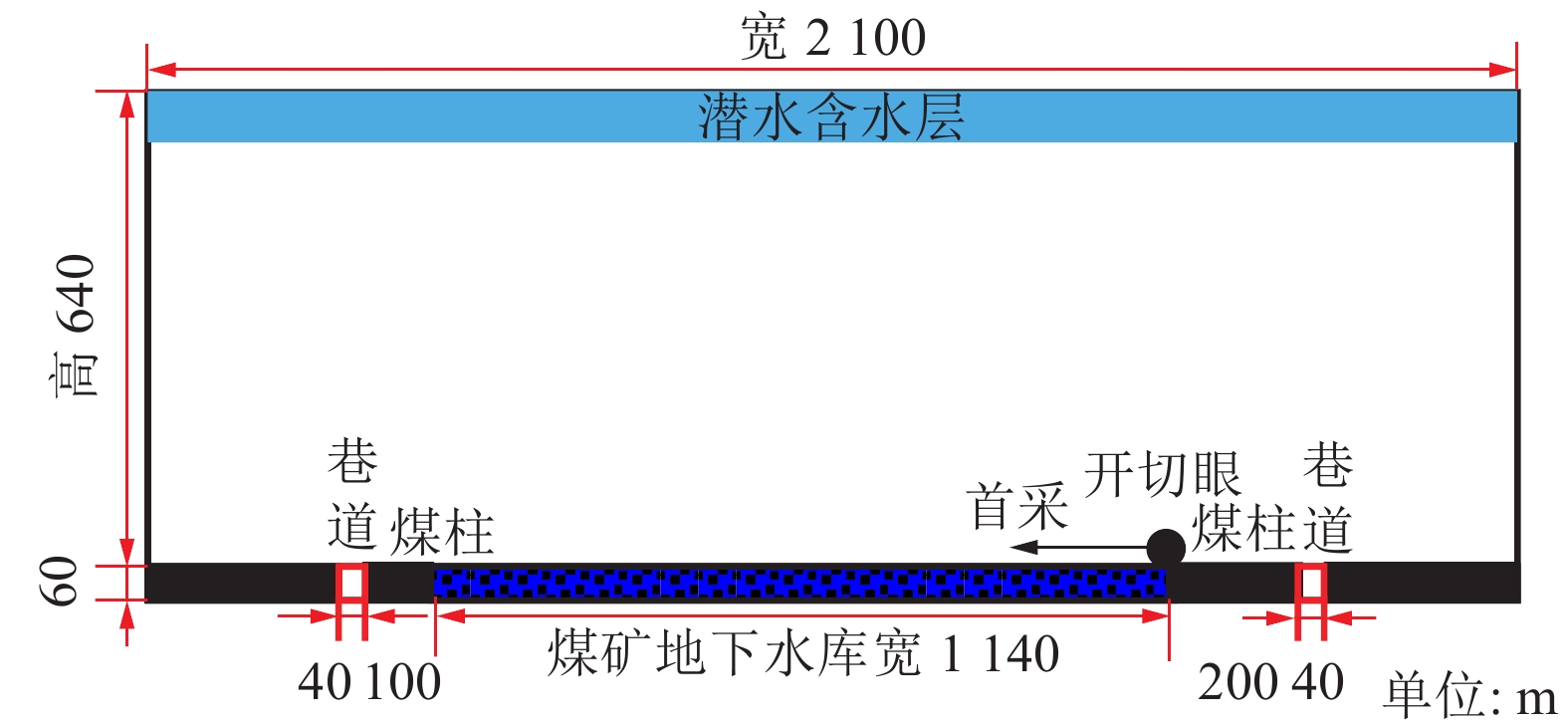
 下载:
下载:
